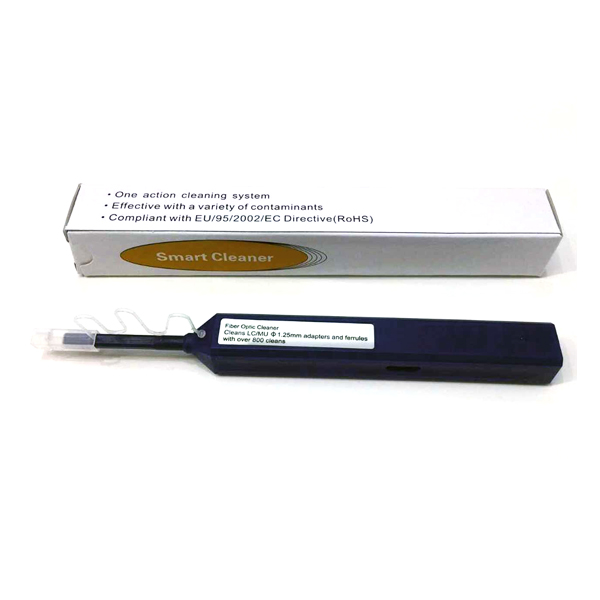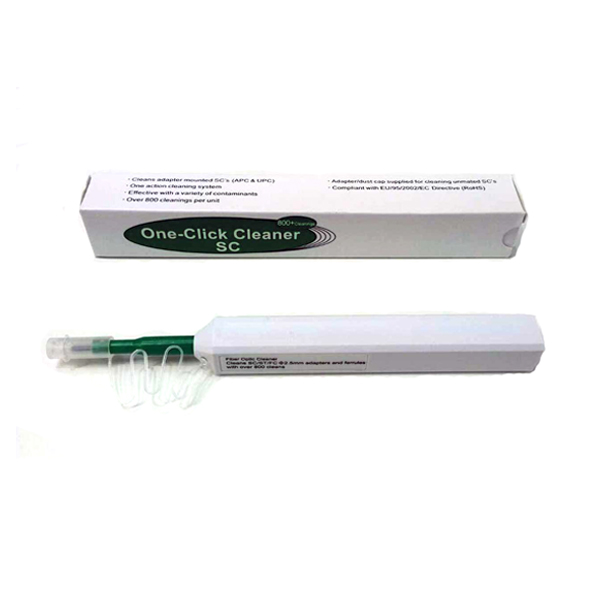VFF5 – FIBRE OPTIC CABLE VISUAL FAULT FINDER
VFF5
Easily identify and locate faults in fibre optic cabling with VFF5
The Visual Fault Finder VFF5 projects a highly visible laser light source into fibre optic cabling. This is used to check continuity, locate breaks, poor mechanical splices and damaged connectors.
- Visually identifies and locates faults in fibre optic cabling
- 2.5mm universal adaptor for all ST, SC and FC connectors
- Useful over a distance of 5km (3 miles)
- Up to 80 hours of operation
- Ruggedised aluminium body
£210 excl. VAT
[site_reviews_summary assigned_posts="post_id" hide="bars,rating,summary"]Product highlights
VFF5 – FIBRE OPTIC CABLE VISUAL FAULT FINDER
The Visual Fault Finder is a visible laser light source used to check continuity, locate breaks, poor mechanical splices and damaged connectors in fibre optic cabling.
Used to verify continuity, test and find breaks in fibre links, locate pinched fibre strands in termination cabinets, or anywhere fibre optic cables are terminated and subject to mechanical damage.
The VFF5 is also an excellent aide to technicians terminating mechanical splices or pre-polished connectors where leaking light is an indicator of a poor fibre cleave or other misalignment.
Key features
A hand-held, battery-powered tool, the VFF5 projects a highly visible red light into a fibre optic cable. The VFF5 is used to check continuity of cabling between termination points and to locate bends or breaks in fibres at splicing and termination points.
The VFF5 is useful over a distance of approximately 5km (3.1mi) into multi-mode fibre and single mode fibre. Use it as a stand-alone first-line basic troubleshooting tool, or in conjunction with an OTDR to pinpoint faults. Any breaks will be seen as a conspicuously glowing or blinking red light area (in 3mm or smaller cables).
The VFF5 is equipped with a high-power, day light visible 650nm laser diode which operates either in continuous or flashing mode. The design prevents battery drain due to accidental activation of the tool while inside a tool pouch.
Two AA batteries provide over 30 hours of operation in continuous mode and 80 hours of operation in flashing mode.
The unit is packaged in a pocket-sized, rugged metal housing and is fitted with 2.5 mm universal connector that accepts ST, SC and FC optical connectors.
Testing of fibre continuity and locating bends or breaks in small fibre optic cabling
A hand-held, battery-powered tool, the VFF5 projects a highly visible red light into a fibre optic cable. The VFF5 is used to check continuity of cabling between termination points and to locate bends or breaks in fibres at splicing and termination points.
The VFF5 is useful over a distance of approximately 5km (3.1mi) into multi-mode fibre and single mode fibre. Use it as a stand-alone first-line basic troubleshooting tool, or in conjunction with an OTDR to pinpoint faults. Any breaks will be seen as a conspicuously glowing or blinking red light area (in 3mm or smaller cables).
The VFF5 is equipped with a high-power, day light visible 650nm laser diode which operates either in continuous or flashing mode. The design prevents battery drain due to accidental activation of the tool while inside a tool pouch.
Two AA batteries provide over 30 hours of operation in continuous mode and 80 hours of operation in flashing mode.
The unit is packaged in a pocket-sized, rugged metal housing and is fitted with 2.5 mm universal connector that accepts ST, SC and FC optical connectors.
Testing of fibre continuity and locating bends or breaks in small fibre optic cabling
Accessories

One-Click Fibre Cleaner STC-FC-1.25mm
33-963-11 - This 1.25mm One-click Cleaner is a high-performance and easy-to-use fibre tool that has been designed to clean both the

One-Click Fibre Cleaner STC-FC2.5mm
33-963-10 - This 2.5mm One-click Cleaner is a high-performance and easy-to-use fibre tool that has been designed to clean both the m

FC/LC Hybrid Adapter
135051 - The FC to LC adapter offers a simple solution to connect LC terminated cables with devices such as test equipment that d
Frequently Asked Questions
- Q: What type of connectors does the VFF5 accept?a. The universal 2.5mm adapter directly accepts any 2.5mm PC connector. Examples are ST, SC, and FC connectors. To test small form factor (SFF) connectors such as LCs or MTRJs, a hybrid patch cord can be used that converts a 2.5mm connector to the desired connector. Additionally, aftermarket adapters are available that will convert a 2.5mm connector to a 1.25mm (LC) connector without the use of a cable. Contact technical support if you have questions about where to obtain adapters or hybrid cables. b. Angled Physical Contact (APC) connectors should not be connected directly to the VFF5. Instead use a PC to APC conversion cable.
- Q. How far away can the light from the VFF5 be seen?a. There is no industry standard for the specification of light visibility of this class of device. Factors that affect viewable distance are battery life, type of fibre (MM or SM), fibre attenuation coefficient, fibre buffer and jacket colour, number of connectors in the link, and ambient lighting. The VFF5 is conservatively specified to have a viewable distance of 3km/2.3mi into multimode fibre and 4km/2.5mi into single mode fibre. Under optimal conditions the viewable distance may increase to 5-6km (3.1-3.8mi).
- Q. Can the VFF5 detect breaks in any type of cable?a. Visual fault finders in general have limitations to the type of cables the light is visible through. Typically 3mm (standard simplex patch cords) and smaller cable will allow the light to penetrate through the jacket when the fibre is bent, pinched or broken. However, the brightness is directly related to the colour of both the fibre buffer and cable jacket. Dark coloured buffers may absorb most of the leaking light and be difficult to see. b. Outside Plant Cable (OSP) is constructed with a heavy, black jacket that no type of visual fault finder will be able to penetrate if the break is mid-span (this is a perfect application for the micro-OTDR). However, these cables are usually damaged at the termination point where a fan-out kit is used. A break at this point would be easily visible.
- Q. Is it dangerous to look into the laser beam?a. The unit uses a Class II laser which is relatively low power and considered to be "eye safe" by the FDA. This means that if the output from the VFF5 is accidentally shined into the eye, a person’s natural reflex will be to look away and this reflex occurs long before any damage is done. However this relates to the beam in "free space." One safety concern for fibre optic technicians is that they might accidentally look into a fibre with an inspection microscope when a visible laser is being shined into the opposite end, magnifying the beam intensity. For this reason, most fibre inspection scopes have infrared filters that protect the eye in these cases. However, care should always be taken not to look directly into the beam and to ensure that a fibre link is "dark" before looking into it with a microscope.




 Free Shipping
Free Shipping 